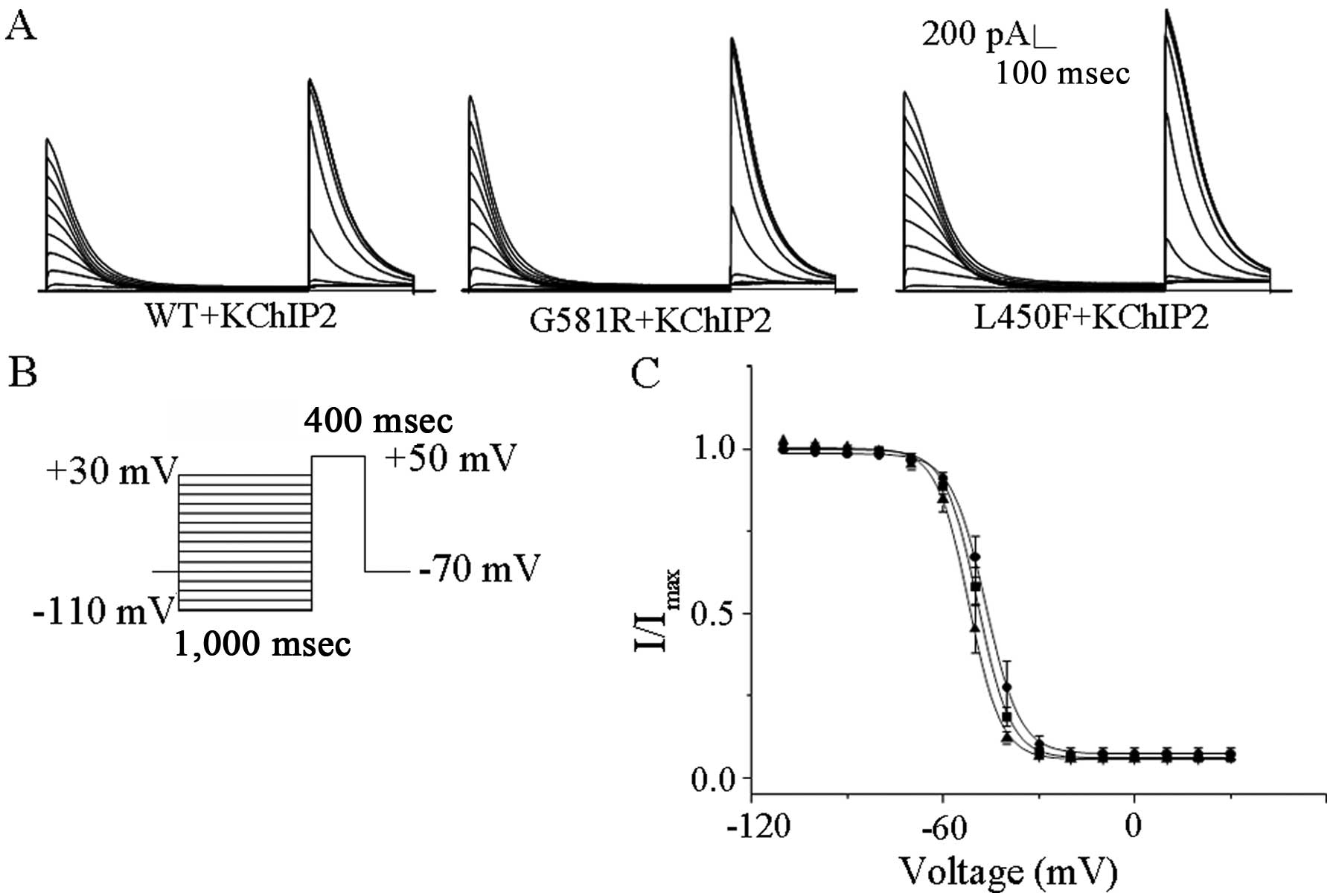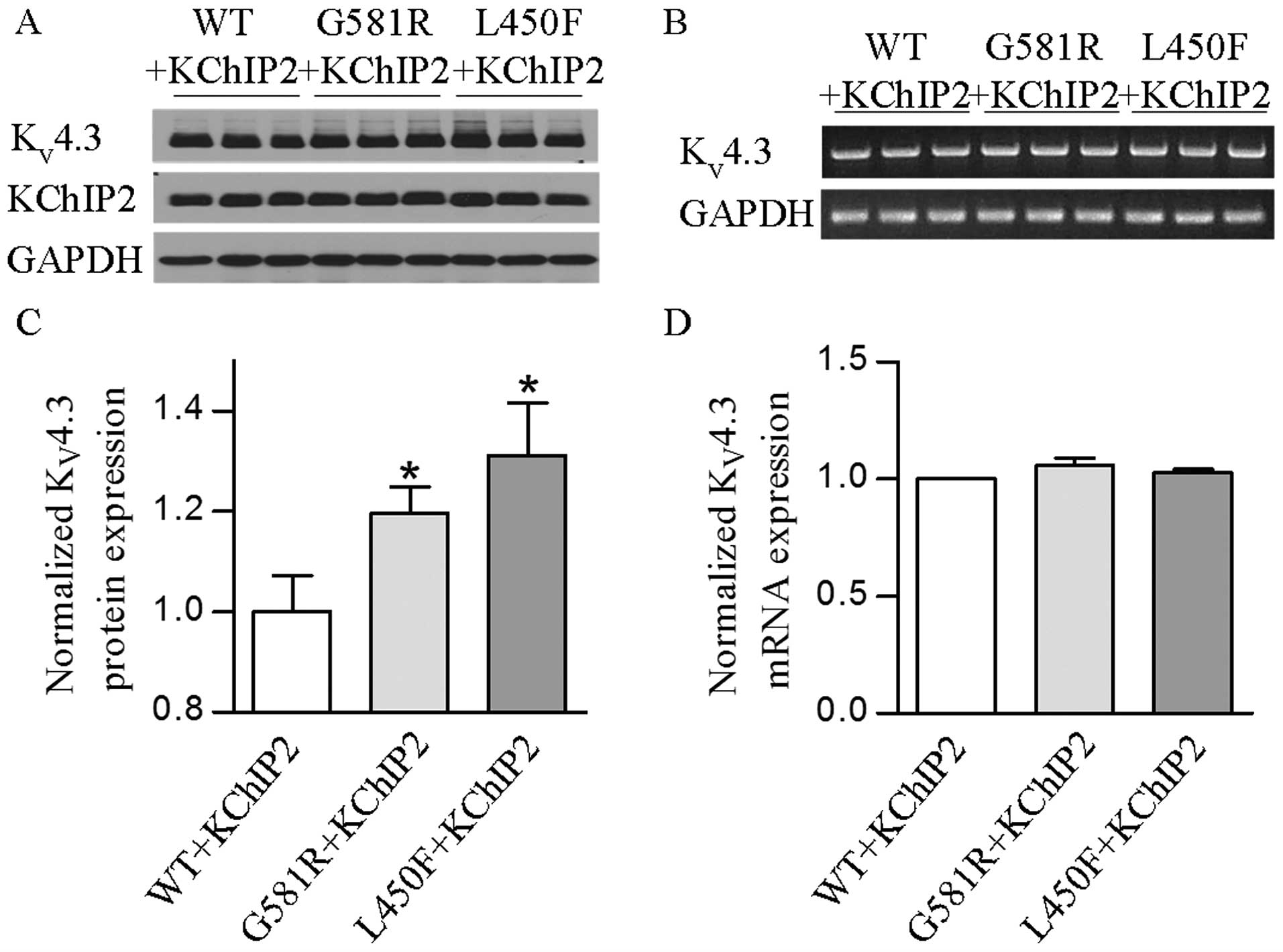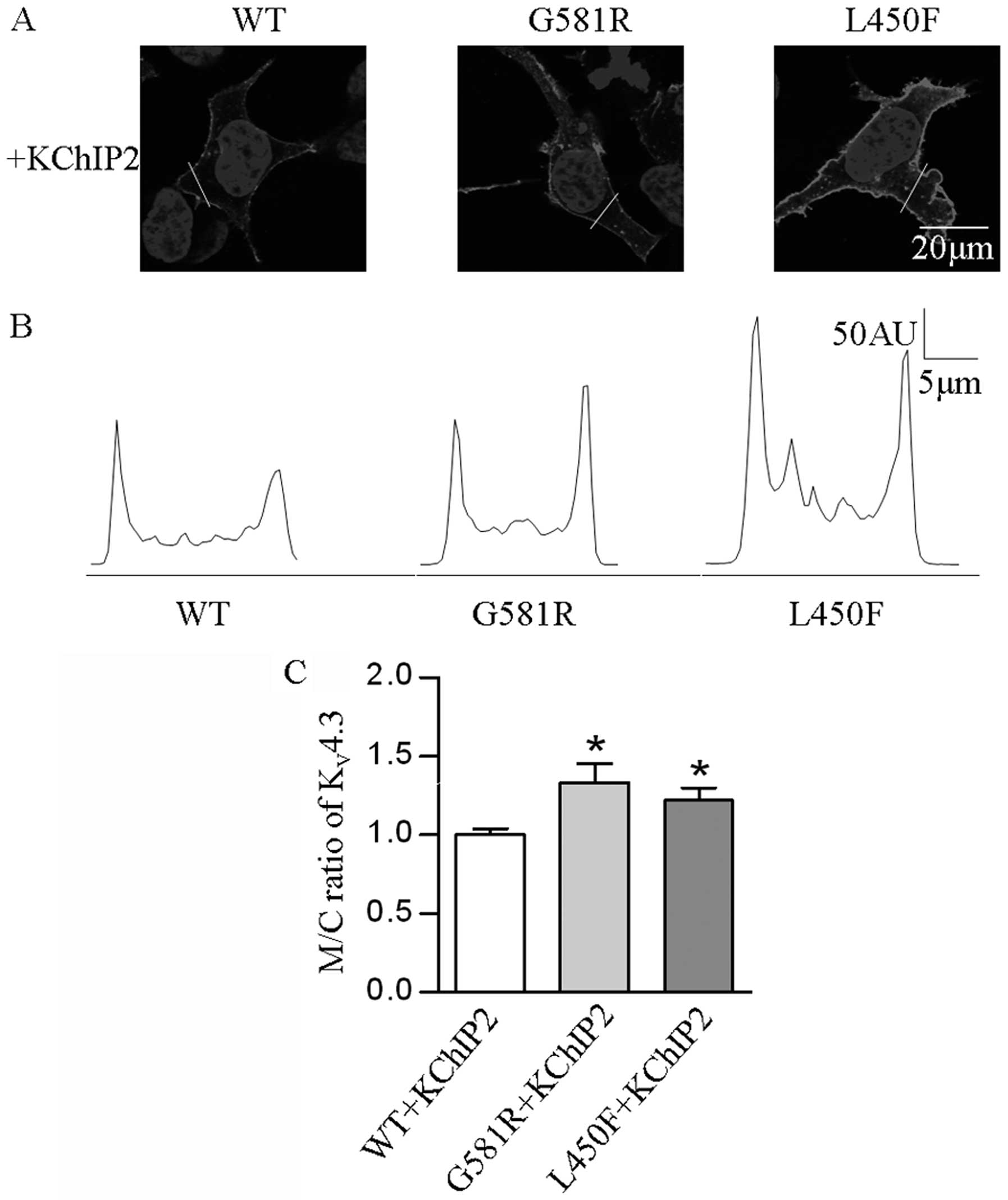Two novel Brugada syndrome-associated mutations increase KV4.3 membrane expression and function
- Authors:
- Published online on: May 26, 2015 https://doi.org/10.3892/ijmm.2015.2223
- Pages: 309-315
Metrics:
Total
Views: 0 (Spandidos Publications: | PMC Statistics:
)
Total PDF Downloads: 0 (Spandidos Publications: | PMC Statistics:
)
Abstract
The human cardiac fast transient outward K+ channel is composed of the KV4.3 α subunit encoded by KCND3 and the K+ channel‑interacting protein 2 (KChIP2) β subunit, and determines the early repolarization of the action potential (AP). Two human mutations (G600R and L450F) in KV4.3 are associated with Brugada syndrome and they increase the KV4.3/KChIP2‑encoded fast transient outward K+ current (Ito,f) and cause the stable loss of the AP dome. However, the detailed mechanisms underlying the gain of Ito,f function by these two mutations are largely unknown. The experiments in the present study were undertaken to investigate the effect of these mutations and the underlying mechanism. Whole cell patch‑clamp recording was performed in HEK‑293 cells expressing KV4.3‑wild‑type (WT) and KV4.3 mutants with KChIP2. The two individual mutant‑encoded currents were significantly increased but the kinetics of the channels affected by the two mutations were different. The two mutations slowed KV4.3/KChIP2‑encoded channel inactivation; they did not increase the recovery from the KV4.3/KChIP2‑encoded channel inactivation. Western blotting showed that total KV4.3 protein was significantly augmented in HEK‑293 cells expressing the two individual mutants with KChIP2. Furthermore, immunofluorescence confocal microscopy demonstrated that the KV4.3 channel protein was expressed more in the cell membrane compared to the cytoplasm in cells that expressed individual mutants with KChIP2. Also, KChIP2 increased the amount of channel protein in the cell membrane of KV4.3 mutants significantly more than KV4.3‑WT. Reverse transcription‑polymerase chain reaction showed that KV4.3 mRNA was not significantly changed by individual mutations in the presence of KChIP2. Taken together, the present study revealed that the mutations cause a gain‑of‑function of KV4.3/KChIP2‑encoded channels by increasing membrane protein expression and slowing channel inactivation.















